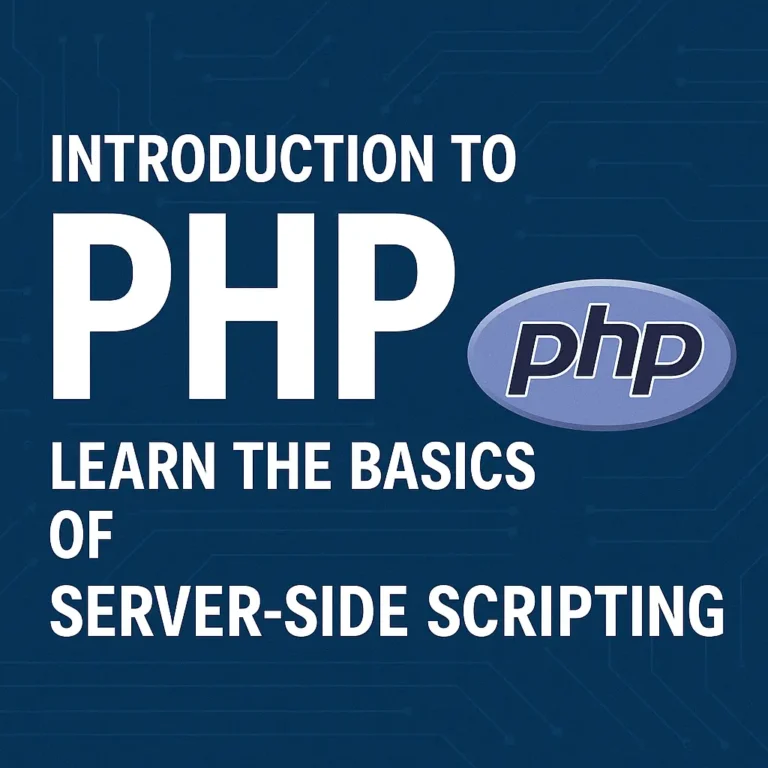In this comprehensive guide, we’ll explore the fundamentals of XML parsing in PHP, covering everything from the basics of XML structure and syntax to advanced techniques for parsing and traversing XML documents. Through detailed explanations and practical code examples, you’ll gain a solid understanding of XML parsing in PHP and learn how to harness its power to handle XML data effectively in your web applications.
Basics of XML
What is XML?
XML, or Extensible Markup Language, is a markup language that defines rules for encoding documents in a format that is both human-readable and machine-readable. It provides a way to structure and organize data using custom tags and attributes.
XML Syntax
XML documents consist of elements, attributes, and text content. Elements are enclosed in tags (<element>), and attributes provide additional information about elements within the opening tag (<element attribute=”value”>). Text content can appear within elements or as the value of attributes.
<person>
<name>John Doe</name>
<age>30</age>
<email>john@example.com</email>
</person>
Parsing XML in PHP
Using SimpleXML
PHP provides the SimpleXML extension for parsing XML documents effortlessly. SimpleXML allows you to load XML data from a file or string and navigate through its elements using object-oriented syntax.
Parsing XML from a File
<?php
// Load XML from file
$xml = simplexml_load_file('data.xml');
// Access XML elements
echo $xml->person->name; // Output: John Doe
echo $xml->person->age; // Output: 30
echo $xml->person->email; // Output: john@example.com
?>
Parsing XML from a String
<?php
// XML string
$xml_string = '<?xml version="1.0" encoding="UTF-8"?>
<person>
<name>John Doe</name>
<age>30</age>
<email>john@example.com</email>
</person>';
// Load XML from string
$xml = simplexml_load_string($xml_string);
// Access XML elements
echo $xml->name; // Output: John Doe
echo $xml->age; // Output: 30
echo $xml->email; // Output: john@example.com
?>
Using DOMDocument
PHP’s DOMDocument extension provides another powerful option for parsing XML documents. DOMDocument allows you to load, manipulate, and traverse XML documents using a DOM (Document Object Model) tree.
Parsing XML from a File
<?php
// Load XML from file
$doc = new DOMDocument();
$doc->load('data.xml');
// Get root element
$root = $doc->documentElement;
// Access XML elements
$name = $root->getElementsByTagName('name')->item(0)->nodeValue;
$age = $root->getElementsByTagName('age')->item(0)->nodeValue;
$email = $root->getElementsByTagName('email')->item(0)->nodeValue;
echo $name; // Output: John Doe
echo $age; // Output: 30
echo $email; // Output: john@example.com
?>
Parsing XML from a String
<?php
// XML string
$xml_string = '<?xml version="1.0" encoding="UTF-8"?>
<person>
<name>John Doe</name>
<age>30</age>
<email>john@example.com</email>
</person>';
// Load XML from string
$doc = new DOMDocument();
$doc->loadXML($xml_string);
// Get root element
$root = $doc->documentElement;
// Access XML elements
$name = $root->getElementsByTagName('name')->item(0)->nodeValue;
$age = $root->getElementsByTagName('age')->item(0)->nodeValue;
$email = $root->getElementsByTagName('email')->item(0)->nodeValue;
echo $name; // Output: John Doe
echo $age; // Output: 30
echo $email; // Output: john@example.com
?>
Best Practices
Handle Errors Gracefully: Check for errors when parsing XML and handle them gracefully to prevent unexpected behavior.
Use SimpleXML for Simple Tasks: For basic XML parsing tasks, SimpleXML provides a more intuitive and concise syntax compared to DOMDocument.
Use DOMDocument for Complex Tasks: For more complex XML manipulation tasks, such as modifying or generating XML documents, DOMDocument offers greater flexibility and control.
Validate XML Data: Ensure that XML data conforms to the expected schema and structure to prevent parsing errors and security vulnerabilities.
Conclusion
Parsing XML in PHP is a fundamental skill for web developers, enabling them to handle structured data efficiently in their applications. In this guide, we explored the basics of XML structure and syntax, as well as techniques for parsing XML documents in PHP using the SimpleXML and DOMDocument extensions. By following best practices and leveraging PHP’s powerful XML parsing capabilities, you can build robust and reliable web applications that handle XML data seamlessly.
<?php
// Example PHP code demonstrating XML parsing with SimpleXML
$xml = simplexml_load_file('data.xml');
echo $xml->person->name; // Output: John Doe
?>
<?php
// Example PHP code demonstrating XML parsing with DOMDocument
$doc = new DOMDocument();
$doc->load('data.xml');
$name = $doc->getElementsByTagName('name')->item(0)->nodeValue;
echo $name; // Output: John Doe
?>
These PHP scripts demonstrate basic XML parsing using SimpleXML and DOMDocument in PHP. By incorporating these techniques into your PHP projects, you can effectively parse and manipulate XML data and build dynamic and data-driven web applications.






